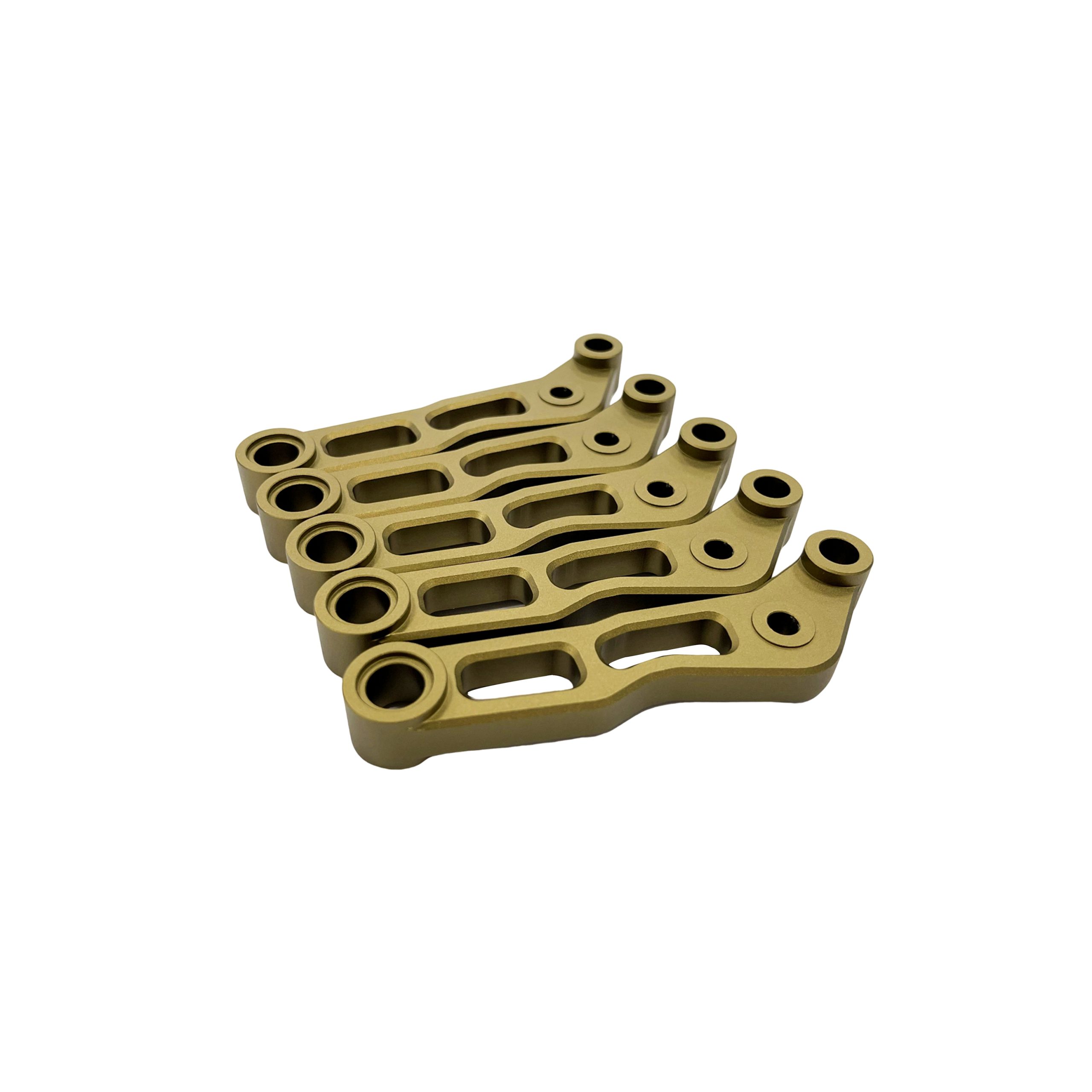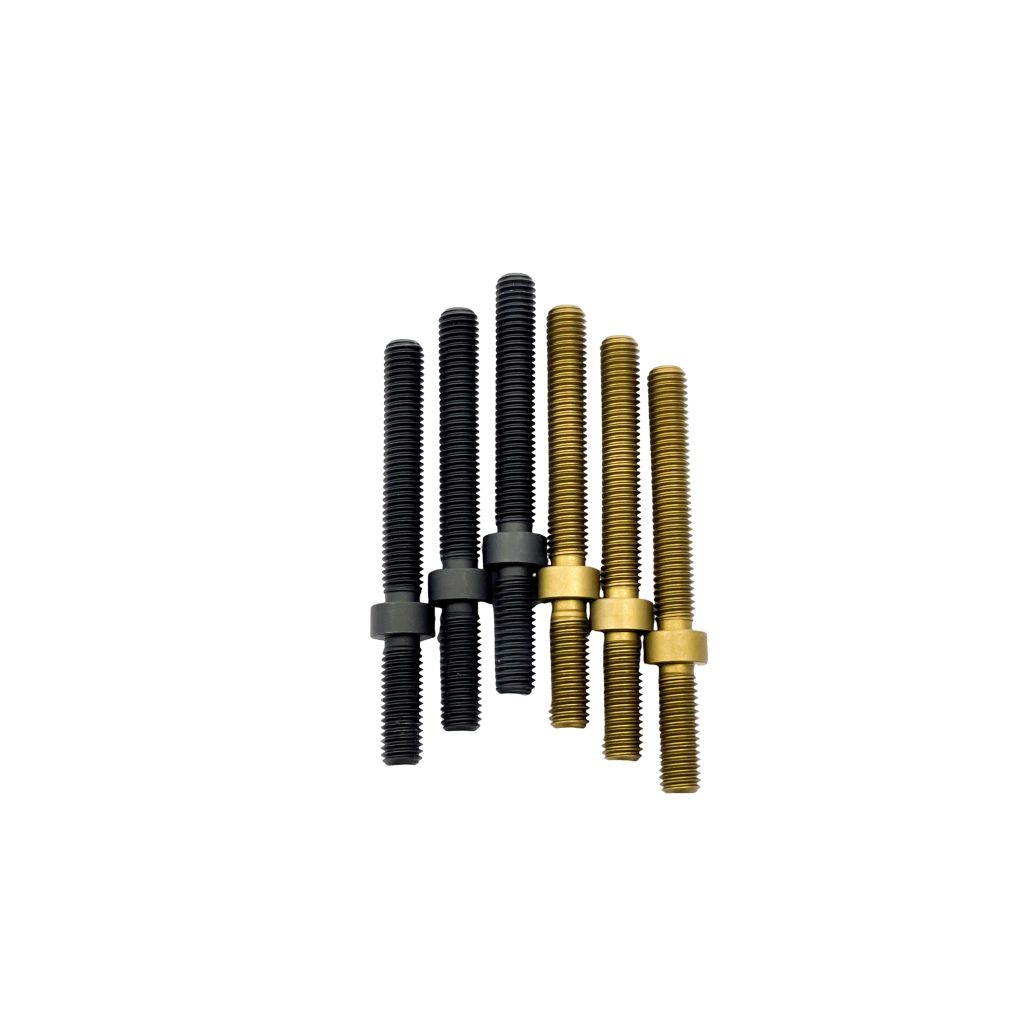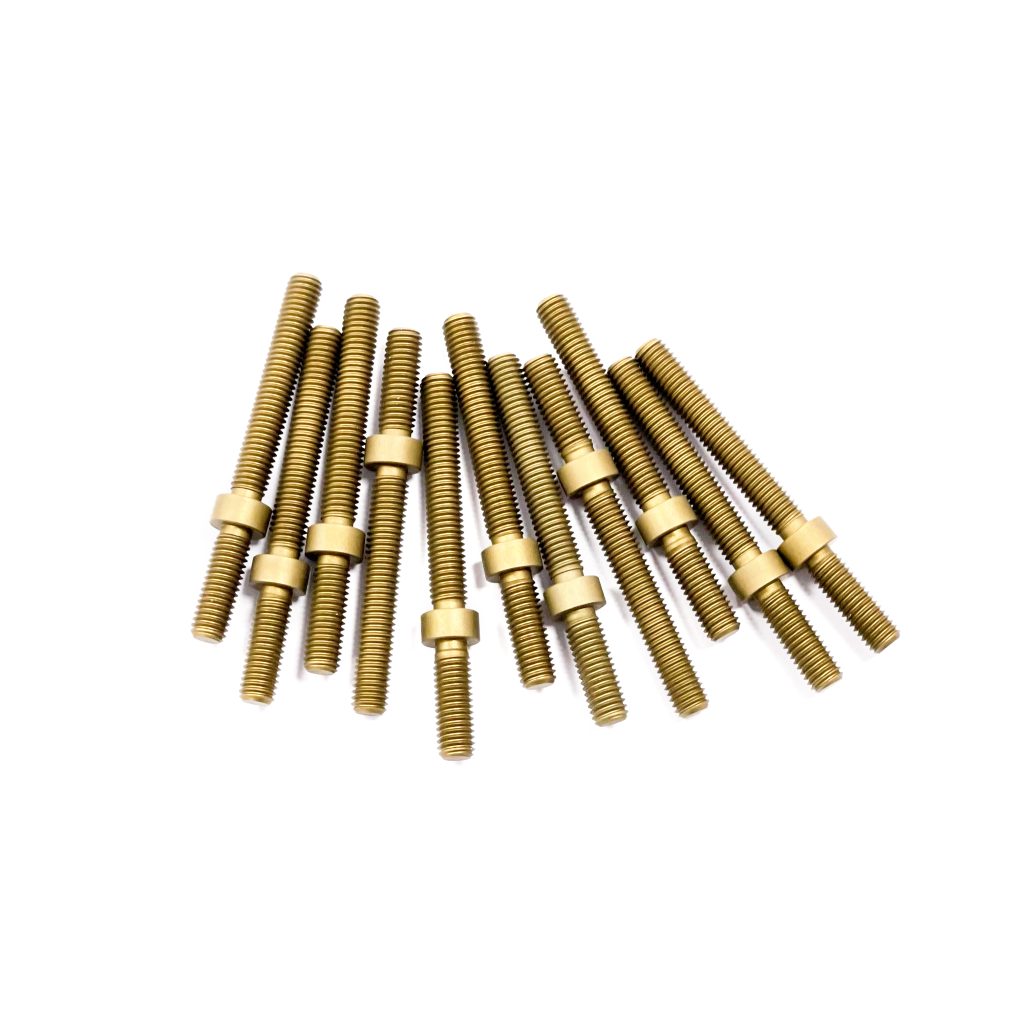In the precision manufacturing landscape, CNC machining stands as a cornerstone for producing complex components with unmatched accuracy. However, the journey from a raw CNC-machined part to a high-performance component isn’t complete without proper surface treatment. This critical step elevates the functionality, durability, and aesthetics of CNC parts, making it indispensable across industries from aerospace to automotive. In this article, we delve into the most effective surface treatment methods, their applications, and how they transform CNC parts into engineered perfection.
Why Surface Treatment Matters for CNC Parts
CNC machining ensures tight dimensional tolerances, but it often leaves behind micro-defects like tool marks, burrs, or oxidation—flaws that can compromise a part’s performance. Surface treatment addresses these issues by:
- Improving Corrosion Resistance: Protecting parts from environmental damage, crucial for outdoor or marine applications.
- Enhancing Wear Resistance: Reducing friction and extending service life for high-load components.
- Boosting Aesthetics: Achieving smooth finishes or decorative effects for consumer products and automotive interiors.
- Correcting Surface Imperfections: Smoothing rough textures (e.g., reducing surface roughness from Ra 1.6μm to Ra 0.2μm) to meet precision requirements.

Surface treatments such as sandblasting and electroplating can improve the performance and appearance of CNC parts. Different processes are used for various scenarios
Common Surface Treatment Methods for CNC Parts
1. Mechanical Surface Treatments
Mechanical methods reshape the surface through physical processes, ideal for refining textures or preparing parts for subsequent coatings.
Grinding and Polishing
- Process: Uses abrasive tools to remove material and achieve ultra-smooth surfaces.
- Applications:
- Optical components (mirror finishes, Ra ≤ 0.01μm).
- Mold cavities for plastic injection, where surface smoothness directly affects part release.
- CNC Synergy: Works seamlessly with pre-machined surfaces, refining CNC-generated geometries to perfection.
Sandblasting
- Process: High-velocity abrasive particles clean and roughen surfaces, improving coating adhesion.
- Key Parameters:
- Grit size (e.g., 80-grit for moderate roughness, 240-grit for fine texture).
- Pressure (50–100 PSI, adjusted for material hardness).
- Use Case: Preparing aluminum CNC parts for anodizing, ensuring the oxide layer bonds uniformly.
2. Chemical Surface Treatments
Chemical processes alter the surface at a molecular level, creating protective or functional layers.
Anodizing (Aluminum Parts)
- Process: Electrolytic oxidation forms a porous aluminum oxide layer (5–25μm thick).
- Benefits:
- Corrosion resistance (salt spray test results exceeding 1,000 hours).
- Customizable color through dye absorption, enhancing both protection and aesthetics.
- Industry Impact: Widely used in aerospace for lightweight yet durable components like wing brackets.
Chemical Plating (Electroless Nickel Plating)
- Process: Autocatalytic deposition of nickel-phosphorus alloy without electricity.
- Advantages:
- Uniform coating on complex geometries, including blind holes and recesses.
- High hardness (HV 500–700) and wear resistance, ideal for gearboxes and hydraulic parts.
- CNC Integration: Corrects minor dimensional errors (±0.005mm) while enhancing surface properties.
3. Coating Treatments
Coatings add a protective or functional layer, tailored to specific performance needs.
Electroplating
- Process: Electrolytic deposition of metals (chrome, nickel, gold) onto part surfaces.
- Key Applications:
- Hard Chromium Plating: For mold cores (hardness HV 800–1,200) to resist abrasive wear.
- Gold Plating: On electrical contacts (e.g., connectors) to ensure low resistance (≤50mΩ) and signal integrity.
- Thickness Control: Precision plating (0.5–50μm) allows tight dimensional control, critical for aerospace fasteners.
Powder Coating
- Process: Dry powder electrostatically applied and cured to form a durable polymer layer.
- Benefits:
- Excellent corrosion resistance (especially for steel CNC parts in outdoor equipment).
- Wide color range and texture options for decorative applications like machinery enclosures.

The Surface Treatment Workflow for CNC Parts
1. Pretreatment: The Foundation of Success
- Deburring & Cleaning: Removes machining residues (e.g., 切削液,chips) using ultrasonic baths (40kHz frequency) or high-pressure washing (100–200 bar).
- Surface Activation: Etching or degreasing to ensure coatings adhere properly—e.g., alkaline degreasing for aluminum (50–60℃, 5–10 minutes) before anodizing.
2. Core Treatment: Applying the Solution
- Process Selection: Driven by material (aluminum, steel, titanium) and end-use requirements. For example:
- Titanium CNC parts may use plasma nitriding for wear resistance, while copper parts opt for electroless nickel to prevent oxidation.
- Parameter Optimization: Controlling factors like temperature (±2℃), current density (2–60 A/dm² for electroplating), and treatment time to ensure consistency.
3. Post-Treatment: Sealing the Deal
- Passivation: Enhances corrosion resistance (e.g., trivalent chromium passivation for zinc-plated parts, improving salt spray resistance by 3x).
- Polishing/Finishing: Final touches to achieve desired surface roughness (e.g., buffing to Ra ≤ 0.4μm for automotive trim pieces).
Factors Influencing Surface Treatment Outcomes
1. Material Compatibility
- Aluminum: Best suited for anodizing, chemical plating, and powder coating.
- Steel: Thrives with electroplating (zinc, nickel), black oxide, or paint.
- Titanium: Requires specialized treatments like PVD (physical vapor deposition) for hard, wear-resistant coatings.
2. Design for Treatability
- Feature Considerations: Sharp corners or deep holes may require custom fixtures (e.g., 象形阳极 for electroplating in 盲孔).
- Surface Roughness Specs: Designing with target Ra values (e.g., Ra 0.8μm for plating, Ra 3.2μm for powder coating) ensures optimal results.
3. Process Consistency
- Quality Control: Regular testing using X-ray fluorescence (coating thickness, ±0.1μm accuracy) and salt spray chambers (ASTM B117 standards).
- Operator Expertise: Skilled technicians adjust parameters in real-time, such as modifying pulse electroplating frequency (100–1,000Hz) to improve layer uniformity.
Why do CNC machining parts need electroplating and what are the benefits
CNC machining technology stands as the core processing method for complex precision parts, leveraging its advantages of high accuracy and flexibility. As a critical component of part surface treatment, electroplating processes significantly enhance the corrosion resistance, wear resistance, electrical conductivity, and decorative properties of parts by depositing metal layers on metallic or non-metallic surfaces. Drawing on the author’s two decades of experience in CNC machining, this article systematically dissects the core technologies and process key points of electroplating for CNC parts.
I. Core Application Values of Electroplating for CNC Parts
(A) Functional Coating Enhancement
- Corrosion Resistance Protection
- In industries such as marine engineering and medical devices, zinc-nickel alloy coatings (8–15μm) enable aluminum alloy parts to withstand salt spray tests for over 1,000 hours—an 8-fold improvement compared to untreated components.
- Wear Resistance Reinforcement
- For piston ring parts, hard chromium plating (50–100μm) achieves a surface hardness of HV800–1200, reduces the friction coefficient by 30%, and extends service life by 200%.
- Electrical Conductivity Optimization
- Pure gold plating (1–5μm) on communication device terminals ensures a contact resistance ≤50mΩ, minimizing signal transmission loss by 15% and meeting the demands of high-speed data transmission.
(B) Dimensional Accuracy Compensation
For precision mating parts (e.g., connector pins in the IT industry), electroplating layers (0.5–3μm) precisely correct dimensional deviations from CNC machining (at the ±0.001mm level), achieving H7/g6-class fit accuracy.
(C) Surface Decoration Upgradation
Automotive interior parts utilizing multi-layer electroplating (copper/nickel/chromium composite coatings) achieve a mirror-like finish with Ra≤0.02μm, pass salt spray tests exceeding 500 hours without rust, and enhance tactile comfort.

II. Control of Typical Electroplating Processes for CNC Parts
(A) Key Pretreatment Process Points
- Mechanical Pretreatment
- Precision parts undergo vibratory polishing (800–1200rpm, 15–30 minutes) to eliminate machining tool marks, reducing surface roughness to Ra≤0.8μm.
- Blind-hole parts are cleaned with high-pressure water jets (50–100bar) to ensure no residual cutting fluid in the pores.
- Chemical Treatment
- Aluminum alloy parts undergo alkaline degreasing (NaOH 50–80g/L, 50–60℃, 5–10 minutes) followed by acidic activation (HF 5–10%, room temperature, 30–60 seconds) to form a uniform activation film.
- Steel parts undergo cathodic electrochemical degreasing (current density 5–10A/dm², 3–5 minutes) before electroplating to thoroughly remove surface oxide scales.
(B) Electroplating Process Parameter Control
| Coating Type | Electrolyte Composition | Temperature (℃) | Current Density (A/dm²) | Stirring Method | Coating Thickness (μm) |
| Bright Nickel | NiSO₄ 250–300g/LNiCl₂ 40–60g/LH₃BO₃ 30–40g/L | 50–60 | 2–5 | Air Stirring | 10–25 |
| Electroless Nickel | NiSO₄·6H₂O 25–30g/LNaH₂PO₂·H₂O 20–25g/LCH₃COONa 15–20g/L | 85–90 | Autocatalytic | Mechanical Stirring | 5–50 |
| Hard Chromium | CrO₃ 250–300g/LH₂SO₄ 2.5–3.0g/L | 55–65 | 40–60 | Cathode Movement | 20–100 |
(C) Post-Treatment Process Optimization
- Passivation Treatment
- Zinc-plated parts use trivalent chromium passivation (Cr³⁺ concentration 2–5g/L, pH 1.5–2.5) to form blue-white/color passivation films, tripling salt spray test performance.
- Sealing Treatment
- Porous coatings (e.g., electroless nickel) are sealed with organic agents (50–80℃, 10–15 minutes immersion), reducing porosity by 60% and significantly improving resistance to humidity and heat.
- Stress Relief
- High-strength steel parts undergo dehydrogenation treatment (180–200℃, 2–4 hours holding) after electroplating to mitigate the risk of hydrogen embrittlement and fracture.
III. Key Technical Challenges and Solutions
(A) Insufficient Coating Adhesion
Causes: Incomplete pretreatment (residual oil/oxide), inadequate activation, and excessively high initial current density.
Solutions:
- Employ ultrasonic cleaning (40kHz frequency, 0.5–1W/cm² power) with specialized degreasers (cloud point ≥70℃).
- Extend activation time by 10–20% and regularly monitor effective components in the activation solution (e.g., HF concentration fluctuation ≤±0.5%).
- Use stepwise current loading during electroplating (initial current at 50% of normal, gradually increasing to the rated value after 5 minutes).
(B) Uneven Coating Thickness
Influencing Factors: Part geometry (deep holes/blind holes/edges), electrode distribution, and stirring efficiency.
Control Methods:
- Design specialized shaped anodes (e.g., inner hole anodes with 80% of the hole diameter for deep-hole parts).
- Adopt pulse electroplating technology (duty cycle 30–50%, frequency 100–1000Hz), improving coating uniformity by 40%.
- Optimize the stirring system (e.g., dual-circulation stirring with main speed 1–2m/s and auxiliary speed 0.5–1m/s).
(C) Functional Defect Control
| Defect Type | Typical Case | Technical Countermeasures |
| Poor Conductivity | Gold-plated terminal failure | ① Pre-nickel plating (5–10μm) before gold plating to block substrate diffusion.② Control gold plating solution impurities (Ag⁺≤5ppm, Cu²⁺≤10ppm). |
| Wear Failure | Chromium peeling on mold cores | ① Sandblasting roughening before chromium plating (grit size 50–100μm, pressure 0.3–0.5MPa).② Micro-crack chromium plating (crack density 500–1000 strips/cm). |
| Corrosion Perforation | Aluminum die-casting blistering | ① Zincate zinc plating as a base layer (3–5μm thickness).② Control die-casting porosity (pinhole density ≤5 pieces/cm²). |
IV. Development Trends in Intelligent Electroplating
(A) Intelligent Process Parameter Control
PLC+SCADA systems are introduced to enable real-time monitoring and adaptive adjustment of electroplating parameters (current, voltage, temperature, pH), achieving a control accuracy of ±1%.
(B) Environmentally Friendly Electroplating
- Cyanide-Free Technology: Sodium cyanide substitutes (e.g., HEDP, EDTA) reduce cyanide emissions by over 90%.
- Low/Chromium-Free Passivation: Trivalent chromium passivation matches hexavalent chromium in salt spray resistance (≥1000 hours).
- Zero Wastewater Discharge: RO reverse osmosis + EDI technology achieves a water reuse rate ≥95% and reduces solid waste by 80%.
(C) Nano-Composite Coating Technology
Adding nano-SiC (50–100nm particle size, 5–10g/L content) to nickel coatings increases hardness to HV1200–1500 and wear resistance by 300% compared to conventional nickel, ideal for high-precision gearbox parts.
V. Quality Control Key Points
- First Article Inspection: After each shift or process adjustment, test coating thickness (X-ray fluorescence spectrometer, ±0.1μm accuracy), surface roughness (stylus profilometer, 0.001μm resolution), and adhesion (cross-cut test, ISO grade 0).
- Process Monitoring: Test electrolyte composition (atomic absorption spectrometer), pH (±0.01 accuracy), and temperature (±0.5℃ accuracy) every 2 hours.
- Batch Validation: Sample 5% of each batch for salt spray tests (NSS method, 35±1℃, 5±1% salt concentration) and damp heat tests (85±2℃, 85±5% RH).

